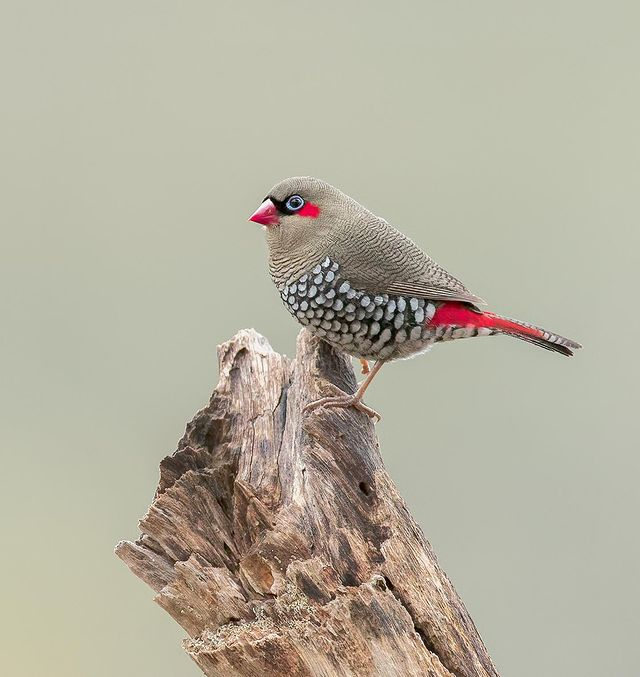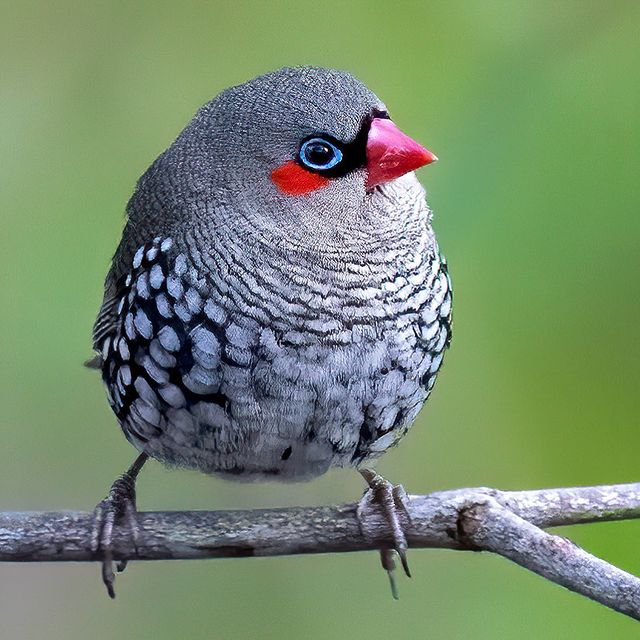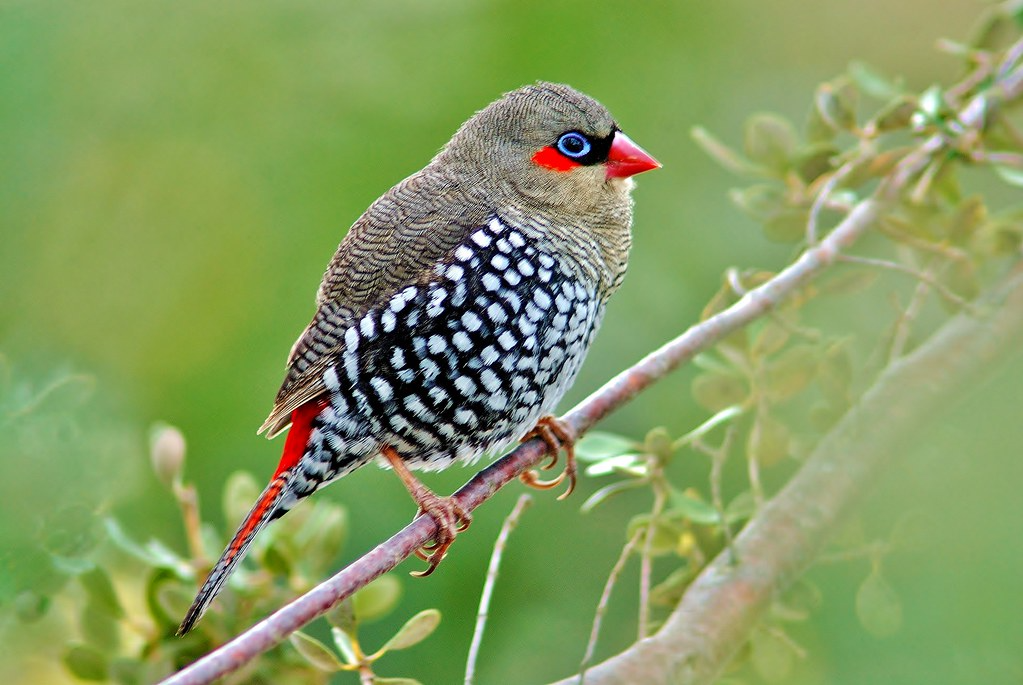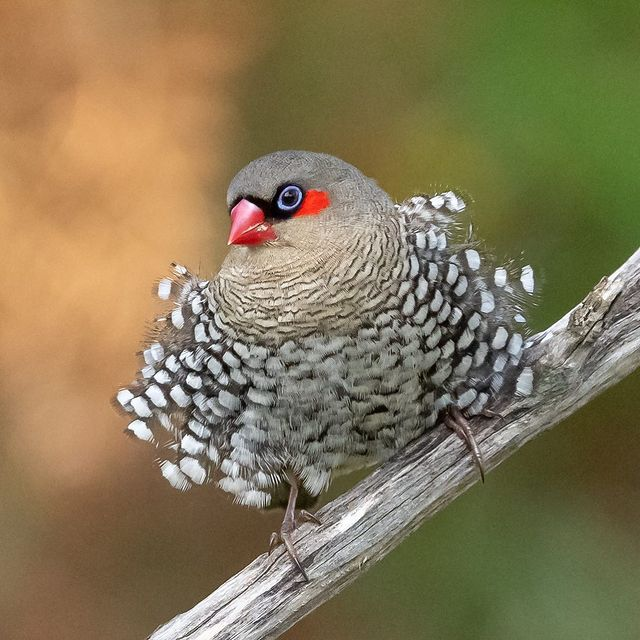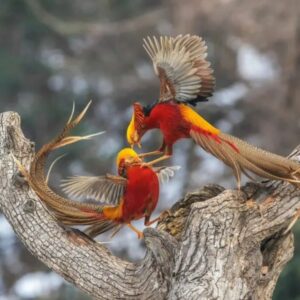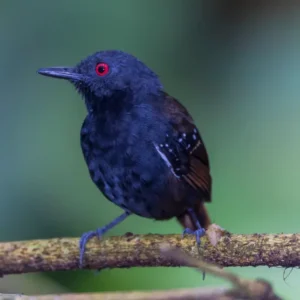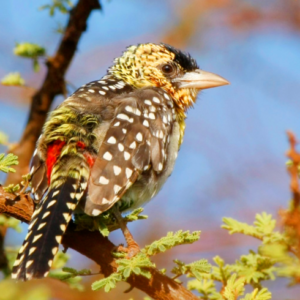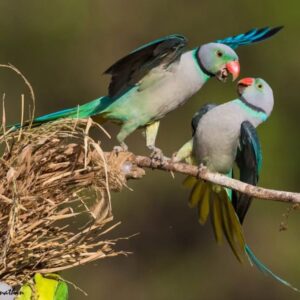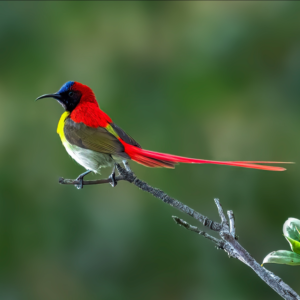The red-eared firetail (Stagonopleura oculata), also known as the boorin, is a tiny, plump, short-tailed bird that captivates with its strikingly exquisite appearance. This small, finch-like bird features black-barred, white-spotted plumage, complemented by a scarlet beak, a bold black mask, and vivid crimson spots behind the eyes and on the rump. Its upper plumage displays olive-brown tones, while its breast showcases a buff-brown color finely striped with black. The blackish underparts are adorned with white spots, enhancing its delicate charm.
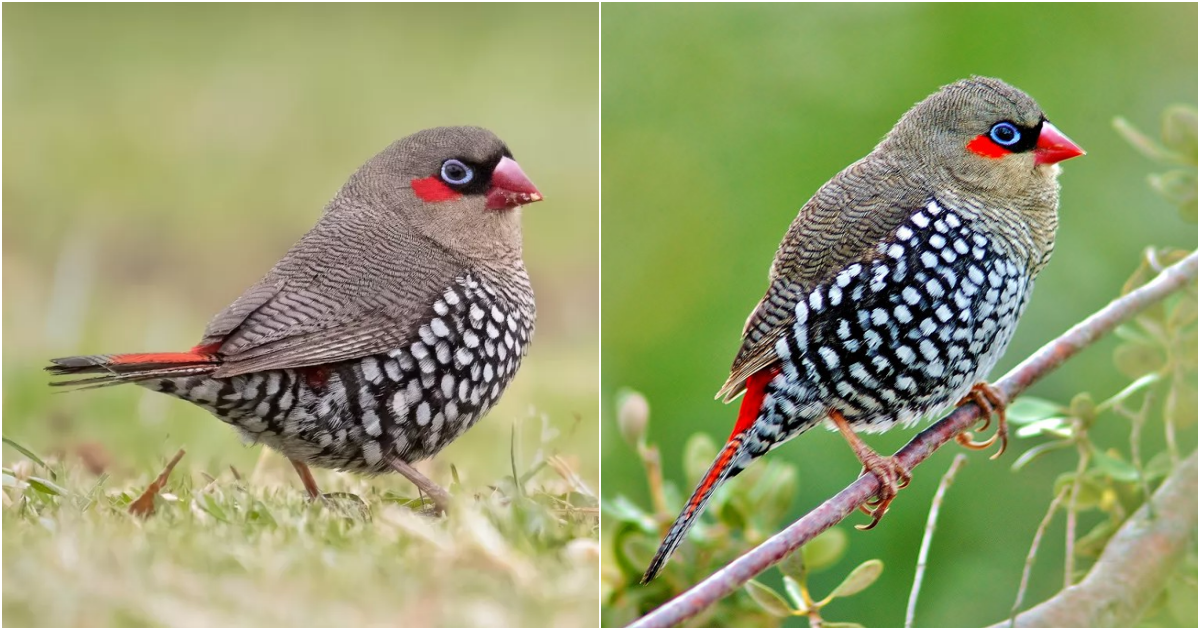
During the breeding season, the male red-eared firetail undergoes a surprising transformation, intensifying its color to impress potential mates. These beautiful birds are commonly found in the dense vegetation of wetlands, specifically in the coastal and subcoastal regions of southwestern Australia. They prefer habitats such as underwood, paperbark bogs, heaths, riverbanks and ravines. Eucalypts, particularly Eucalyptus marginata, together with riparian vegetation adjacent to eucalyptus forests, constitute their forest homes.
These birds form bonds that last a lifetime and mating occurs in the first year. The breeding season generally runs from October to November, possibly extending into January. Their nests are skillfully woven from herbaceous materials and reinforced with green plant tips, forming a rigid spherical structure facing downwards. Each clutch consists of four to six eggs, which hatch after an incubation period of fourteen days. Both parents diligently take turns caring for the eggs every hour and a half to two. After the young are born, the parents remain in the nest for several seconds or up to half an hour during shift changes, displaying their breeding instincts.
Due to its wide distribution and population stability, the red-eared firetail is not currently listed as a threatened species on the IUCN Red List.
In conclusion, the red-eared firetail, with its modest yet captivating beauty, exemplifies the delicate wonders of nature. Its presence in the Australian wetlands increases the attractiveness and biodiversity of this unique region, making it a true treasure worth seeing.

